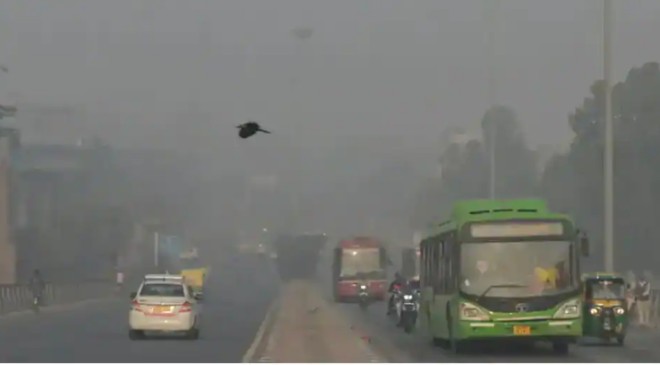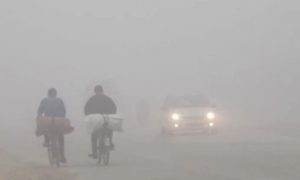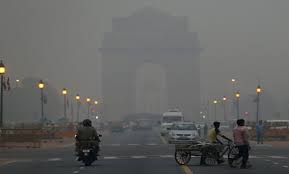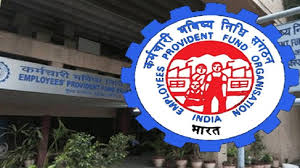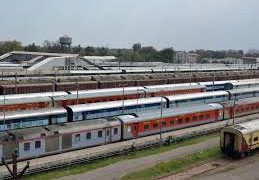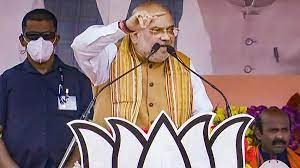Under Stage IV of GRAP, only CNG, electric and BS VI-compliant vehicles from other states are allowed to enter Delhi. Exemptions are granted only to those involved in essential services
As Delhi-NCR continues to breathe ‘hazardous’ air, stringent curbs, including a ban on entry of polluting trucks, have been implemented in the national capital. The air quality in Delhi remained in the ‘severe plus’ category for the second day straight on Monday, due to unfavourable wind conditions and a sharp rise in farm fires across north India.
A toxic haze persisted over Delhi-NCR for the seventh consecutive day, causing significant problems for people with existing respiratory issues. The average Air Quality Index (AQI) of Delhi was recorded at 471 at 7:00 a.m. today, according to the latest data from the System of Air Quality and Weather Forecasting And Research (SAFAR).
The air pollution crisis is not confined to Delhi alone. Several cities in neighbouring Haryana, Rajasthan and Uttar Pradesh have also reported hazardous air quality, with AQI at 571 in Ghaziabad’s Loni, 430 in Noida’s sector 62, 422 in Greater Noida’s Knowledge Park III area, 333 in Gurugram’s Gwal Pahari area and 614 in Faridabad’s New Industrial town.
STAGE IV GRAP MEASURES COME INTO EFFECT
After the 24-hour average AQI worsened from 415 on Saturday to 454 on Sunday, the Centre was prompted to implement all emergency measures mandated under the final Stage IV of its air pollution control plan called the Graded Response Action Plan (GRAP).
GRAP categorises actions into four stages: Stage I – ‘Poor’ (AQI 201-300); Stage II – ‘Very Poor’ (AQI 301-400); Stage III – ‘Severe’ (AQI 401-450); and Stage IV – ‘Severe Plus’ (AQI >450).
Under Stage IV of GRAP, only CNG, electric and BS VI-compliant vehicles from other states are allowed to enter Delhi. Exemptions are granted only to those involved in essential services. All medium and heavy goods vehicles not engaged in essential services are also banned in the capital, according to the latest CAQM order.
Read More: ID runs on IT, and lots of engineering
BAN ON ENTRY OF TRUCKS IN DELHI
The Delhi government’s Transport Department on Sunday also issued an order banning the entry of trucks, except those carrying essential items, into the national capital.
“As per directions provided under Stage IV of the revised GRAP and under Section 115 of the Motor Vehicles Act, 1988, it is hereby ordered… No Entry for Truck traffic into Delhi (Except for Trucks carrying essential commodities/providing essential services and all LNG/CNG/ Electric Trucks),” it said.
The order also banned the entry of light commercial vehicles registered outside Delhi, other than electric vehicles, CNG and BS VI-compliant vehicles, except those carrying essential commodities.
“Ban on plying of Delhi-registered diesel operated Medium Goods Vehicles (MGVs) and Heavy Goods Vehicles (HGV) in Delhi, except those carrying essential commodities/providing essential services.
“This direction shall not be applicable on vehicles carrying essential commodities i.e. raw vegetables, fruits, grains, milk, eggs or ice that is to be used as food items, and tankers carrying petroleum products,” it said.
According to officials, the Transport Department has deployed 18 teams to enforce the restrictions.
“We will deploy four to five more teams to enforce the fresh restrictions. The department has a total of 114 enforcement teams,” an official said.
The Commission for Air Quality Management (CAQM), a statutory body responsible for formulating strategies to combat pollution in the region, asked Delhi and NCR states to order a ban on construction work related to linear public projects and allow 50 per cent of the staff in government and private offices to work from home.
On November 2, the CAQM ordered a ban on non-essential construction work and specific categories of polluting vehicles. The Delhi government has also announced the closure of all primary schools for two days in an effort to safeguard young children from hazardous pollution.
Read More: CBI closure report in bank fraud case against BJP’s Mohit Kamboj rejected
DECLINE IN DELHI-NCR’S AIR QUALITY
Unfavourable meteorological conditions combined with vehicular emissions, paddy straw burning, firecrackers and other local pollution sources contribute to hazardous air quality levels in Delhi-NCR during the winter every year.
According to a Delhi Pollution Control Committee (DPCC) analysis, the capital experiences peak pollution from November 1 to November 15 when the number of stubble burning incidents in Punjab and Haryana increases.
Air quality in Delhi-NCR declined over the past week due to a gradual drop in temperatures, calm winds that trap pollution and a surge in post-harvest paddy straw burning across Punjab and Haryana.
FARM FIRES
According to the New Delhi-based Indian Agricultural Research Institute (IARI), a total of 4,160 farm fires were reported from north India on Sunday — the highest so far this season.
Punjab alone reported 3,230 incidents of stubble burning, the state’s highest in a day so far this season, according to Punjab Remote Sensing Centre data.

Data from the Central Pollution Control Board (CPCB) shows that Delhi’s air quality index increased by over 200 points between October 27 and November 3, ending up in the ‘severe plus’ category on Friday. Friday’s 24-hour average AQI (468) was the worst since the previous high of 471 recorded on November 12, 2021.
The concentration of PM2.5, fine particulate matter capable of penetrating deep into the respiratory system and triggering health problems, exceeded the government-prescribed safe limit of 60 micrograms per cubic metre by seven to eight times at multiple locations throughout Delhi-NCR. It was 30 to 40 times the healthy limit of 15 micrograms per cubic metre set by the WHO.
SRI LANKA-BANGLADESH MATCH TO GO AHEAD
The International Cricket Council (ICC) has decided to go ahead with Monday’s Men’s World Cup 2023 clash between Bangladesh and Sri Lanka despite the alarming pollution levels in the Capital after engaging the services of a renowned Pulmonologist to reduce the AQI at the Arun Jaitley Stadium.
With the AQI levels in New Delhi dropping to dangerous levels, the BCCI engaged the services of renowned Pulmonologist Dr Randeep Guleria to assess the situation in Delhi ahead of Monday’s game and provide independent expert advice, the ICC informed on Sunday.
The ICC along with the BCCI was forced to take this step as the two teams had cancelled their pre-match practice sessions because of the choking pollution in Delhi.
With questions being raised on the advisability of hosting the match in such conditions, the BCCI decided to take the help of Dr Guleria to tackle the situation.
“Under Dr Guleria’s guidance, the venue team has been taking mitigating actions throughout the day including the implementation of water sprinklers around the premises and the installation of air purifiers in the dressing rooms and match officials areas,” an ICC spokesman informed in a statement on Sunday.
“The AQI within the stadium was monitored throughout the day which has reduced to levels considered acceptable by Dr Guleria,” the ICC informed.

